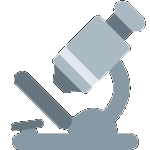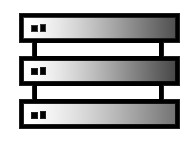Work Packages
|
This work package is the coordinating virtual hub organised by leading members of the PLANMAP consortium. This WP pursues the aim of supervising all the activities included in the project and takes the leading action when conjunct WPs efforts are required. |
|
WP2 aims to develop a standardized approach to geological maps, making best use of modern technology, and to publish several examples of scientific use. In particular, we intend to pass from classical geomorphological maps to geo-stratigraphic maps and integrated geological maps where composition of the surfaces is coupled with retention ages and geomorphology. All of this requires dedicated procedures for integrating in a unique GIS environment numerous layers with diverse information. Thus, WP2 will define the standards of mapping and layer assemblage to guarantee a systematic mapping approach for all maps. |
|
A geological map not only provides geomorphologic, lithologic, and compositional information but also detailed information on the timing of geological units and the sequence of events. In addition, it also allows quantifying geologic processes such as the volcanic activity during time periods of interest. Thus, it is this combination of lithology and ages that allows scientists to reconstruct the evolution of a landscape and to decipher its origin. Most commonly, superposition of units, embayment, and cross-cutting relationships are applied to determine the relative stratigraphy of geologic units. WP3 aims to use crater degradation and crater size-frequency distribution measurements, calibrated to the radiometric ages of the Apollo and Luna landing sites, to provide absolute model ages of the investigated geologic units and contextualise unit sequences in a specific timeframe. |
|
The evolution of a solid Solar System body can be inferred by studying its surface composition, which is affected by internal activity, meteoritic impacts, space weathering, and (where present) ices/atmosphere interaction. WP4 aims to collect and analyse surface compositions retrieved from large datasets produced by the scientific payload of space missions and produce compositional maps by deriving from each spectrum several spectral indices. |
|
Lander/rover data help to provide ground truth for orbital data, and thus, extend the understanding of the orbital data to a local scale. Within WP5 it will be possible to map in situ data over sites well-characterized from orbital data for current landing sites. In addition to traditional mapping tools, WP5 plans to develop new rendering and analytical tools using virtual reality techniques. Virtual environment will be made accessible both from permanent lab facilities and portable devices. |
|
WP6 will use DTMs from orbital spacecraft, 3D geometrical reconstructions from ground from WP5, geological maps upgraded with spectral and chronostratigraphic information from WP2 and WP4 and, where possible, radar sounder data, to generate 3D subsurface geological models of Mercury, Mars, and the Moon. The 3D geological models will allow a better definition of the stratigraphic relationship between units, as well as of the kinematics and displacement associated with different tectonic structures. Hence these models will be useful to test the inherent self-consistency of the geological maps and reveal how the magmatic, tectonic, and sedimentary processes have evolved on the different bodies. The 3D distribution of physical properties in planetary sub-surfaces may represent a key for the quantitative assessment of past and present planetary processes such as volcanic eruptions, sedimentation, ice formation, fluid percolation, gravitational phenomena, and impact crater formation. |
|
WP7 will collect, link, and collate all datasets, products, and metadata derived from other data-producing WPs, as well as provide science, outreach-friendly datasets and mapping products suitable for dissemination. Specific data fusion, including both overlay and spatial analytical capabilities will allow individual map layers and layer bundles deriving from WP2, WP3, and WP5 to be synergistically analysed and integrated into comprehensive mapping products. Human and computer-based analyses employing state-of-the-art computer visualizations will be applied. Global 3D vision based on NASA-ESA visualisations frameworks will be employed to match local and regional 3D data, respectively from WP5 and WP6. |
|
WP8 aims to bring together researchers, agencies, the STEM education community, and the general public and let them have access to higher-level, user-friendly mapping products, suitable also for non-experts and schools. Hence, PLANMAP communication activities have the main objective to foster the interest of the general public and stakeholders. On one side we will contribute to educating people about planetary sciences, natural sciences in general, and ESA space activities in particular and, on the other side, WP8 wants to increase the awareness among space agencies and the planetary science community of the need of high-level geological maps for future planetary exploration. |

 WP1 - Coordination and Management
WP1 - Coordination and Management WP2 - Geomorphological Mapping: Tools, Standards and Maps
WP2 - Geomorphological Mapping: Tools, Standards and Maps WP3 - Stratigraphy and Chronostratigraphy
WP3 - Stratigraphy and Chronostratigraphy WP4 - Compositional Unit definition
WP4 - Compositional Unit definition  WP5 - Ground Truth and Virtual Environment
WP5 - Ground Truth and Virtual Environment WP6 - 3D Subsurface Geological Modelling
WP6 - 3D Subsurface Geological Modelling WP7 - WebGIS, Data Fusion and Data Sharing
WP7 - WebGIS, Data Fusion and Data Sharing WP8 - Communication activities
WP8 - Communication activities  This project receives funding from the European Union Horizon 2020 research and innovation program under grant agreement N. 776276.
This project receives funding from the European Union Horizon 2020 research and innovation program under grant agreement N. 776276.